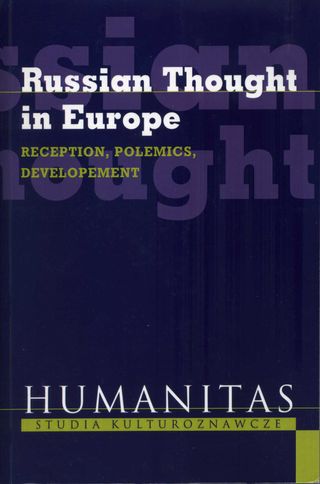?
Russian Thought in Europe. Reception, Polemics, Development
Original Russian thought came into existence fairly late - as late as the 18th and 19th centuries. Creating their own conceptions, Russian thinkers readily referred to various philosophical traditions: the Eastern Christian one as well as the schools and currents that emerged in the West. At the same time, one can observe a reverse phenomenon: Western intellectuals too - philosophers, theologians, men of letters - in one way or another would refer to the oeuvre by Russian writers. This process, which in its broadest sense can be described as the reception of Russian thought in the West (above all in Europe), was begun still in Vladimir Solovyov's lifetime (19th century) and has continued till this day. The notion of reception, employed in this publication, is quite broad in its sense. It means both the influence of Russian philosophy on the works by Western fellow writers, and the criticism and polemics undertaken by the latter, as well as the development, study and research into the thought created in the Russian milieu. All these aspects have come to be reflected in the book hereby presented for the Reader.
